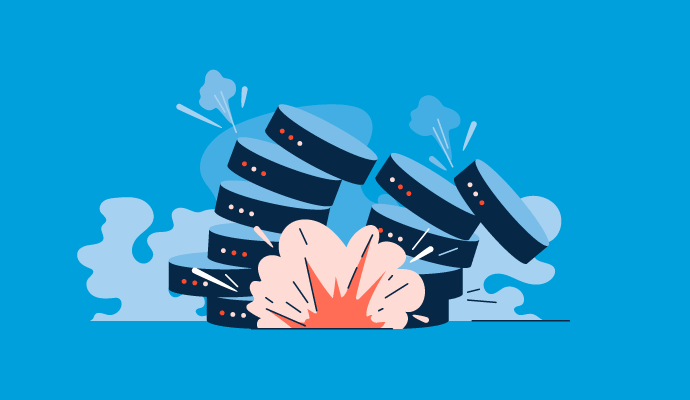Data Destruction Solutions: A Key Element in Your Cyber Security Approach
Data Destruction Solutions: A Key Element in Your Cyber Security Approach
Blog Article
The Significance of Effective Information Damage Practices in Shielding Sensitive Details and Ensuring Computer System Safety And Security
In an age where data breaches are significantly typical, the significance of reliable data destruction methods can not be overstated. Applying robust information damage approaches not only mitigates these dangers but likewise aligns with lawful compliance demands, ensuring that companies copyright their online reputation and foster client depend on.
Understanding Information Destruction
Comprehending information destruction is critical in today's digital landscape, where delicate details can quickly be endangered. Effective data devastation involves not simply removing files however making certain that data is irretrievable with thorough methods. This process is necessary for companies that handle private customer details, intellectual building, or inner files, as any type of violation can bring about severe financial and reputational consequences.
Data damage incorporates numerous strategies, consisting of shredding physical media, degaussing magnetic storage devices, and employing software-based services that overwrite information numerous times. Each approach serves a details objective and needs to straighten with the level of sensitivity of the details being dealt with. Physical devastation is commonly liked for difficult drives including highly confidential information, while software program techniques might suffice for much less delicate info.
Furthermore, adhering to sector requirements and policies, such as the General Data Defense Guideline (GDPR) or the Medical Insurance Transportability and Liability Act (HIPAA), is critical for conformity and to reduce legal dangers. Organizations should develop a durable data devastation policy, train employees on best methods, and on a regular basis investigate their procedures to ensure that all delicate details is taken care of securely and efficiently.
Threats of Inadequate Practices
Inadequate data destruction techniques reveal organizations to considerable risks that can have far-reaching effects. When delicate details is not effectively thrown away, it remains susceptible to unapproved accessibility, which can result in data violations and identity burglary. Such occurrences not just compromise the safety of people however likewise taint the company's reputation, causing a loss of consumer count on and prospective monetary consequences.
Furthermore, regulatory compliance is significantly strict in numerous industries. Failure to adhere to data damage regulations can cause large penalties and lawsuits versus organizations. These penalties can strain economic sources and draw away interest from core service procedures.
Additionally, the abuse of recurring information can lead to copyright theft or company reconnaissance, endangering competitive benefits (data destruction). The effect of poor information devastation expands past prompt economic losses; it can additionally cause lasting damages to brand name honesty and market placement

Organizations have to identify that information safety is not exclusively regarding stopping breaches; it likewise includes the accountable management of data throughout its lifecycle. Neglecting reliable information damage procedures can have devastating implications, emphasizing the need for durable steps to mitigate these threats.
Finest Practices for Data Destruction
Applying efficient data destruction techniques is necessary for securing sensitive details and preserving compliance with governing requirements. Organizations ought to take on a multi-faceted technique to guarantee that information is irretrievable, consequently avoiding unapproved gain access to and potential violations.
First, data need to be categorized based upon level of sensitivity, enabling organizations to use suitable devastation techniques customized to the level of threat. For electronic information, utilizing software-based data-wiping devices that follow sector standards can properly overwrite existing data. Physical devastation methods, such as shredding or degaussing, are critical for devices that save sensitive info, ensuring total obliteration.
Establishing a clear information retention plan is important, describing the length of time different kinds of information must be preserved before damage. Normal audits of information storage space systems are likewise essential to determine unnecessary or obsolete information requiring removal.
Moreover, training staff members on the significance of information destruction and the certain methods to adhere to fosters a culture of safety and security within the company. Maintaining documentation of data destruction processes gives responsibility and supports compliance with interior policies and outside policies. By adhering to these best practices, organizations can considerably reduce the dangers related to data exposure.
Legal and Compliance Factors To Consider

Failing to follow these laws can result in severe fines, including substantial fines and reputational damage. Organizations must execute a robust data devastation policy that aligns with these lawful structures and gives clear guidelines on the proper methods of data disposal, whether physical shredding or digital wiping.
In addition, maintaining documentation of data damage activities is necessary for showing conformity throughout audits or inspections. By prioritizing legal and compliance considerations, organizations can enhance their data safety and security position and foster More Help count on with clients and stakeholders, eventually contributing to a much more protected data administration atmosphere.
Benefits of Effective Data Destruction
Reliable information devastation methods prolong beyond mere compliance; they supply substantial benefits to companies that prioritize them. By guaranteeing that sensitive information is irretrievably destroyed, organizations mitigate the threat of information breaches and the potential financial repercussions related to them. This proactive strategy not only safeguards versus unauthorized accessibility but likewise improves the overall reliability of the organization in the eyes of customers and stakeholders.
Executing robust information damage methods, such as physical devastation of storage devices or sophisticated information cleaning techniques, contributes to the strengthening of a company's cybersecurity position. data destruction. It reduces the chance of intellectual building burglary and secures proprietary details, thus maintaining an one-upmanship in the marketplace

Conclusion
In final thought, efficient data devastation practices are important for securing delicate info and boosting total computer system security. By executing thorough approaches such as shredding, software, and degaussing overwriting, companies can minimize the threats connected with unapproved accessibility and information breaches. Adherence to regulatory standards, including GDPR and HIPAA, more enhances conformity and secures against legal repercussions. Inevitably, go to my blog a dedication to durable data destruction strategies cultivates a society of obligation, therefore reinforcing a company's cybersecurity stance and preserving customer count on.

Report this page